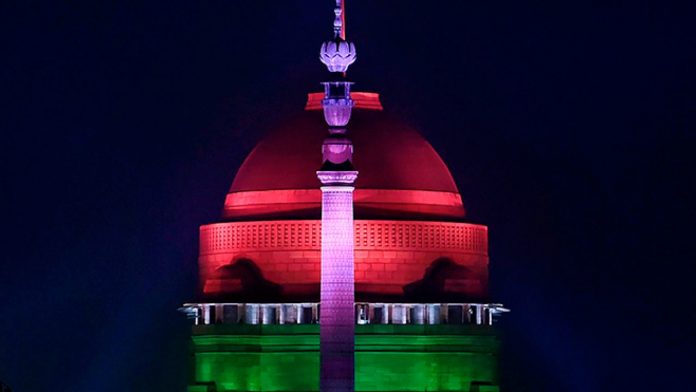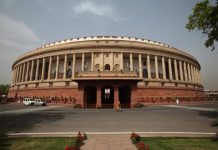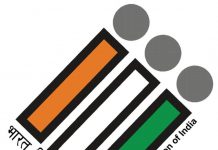The article is written by Naman Sherstra from the Department of Law, University of Calcutta. The critical analysis of the 1969 presidential elections is depicted in the article.
Table of Contents
Introduction
The history of presidential elections in India has witnessed some of the most controversial elections. The 2007 presidential elections and battle between Pratibha Patil- Bhairon Singh Shekhawat are the most controversial elections of the decade. However, the first controversial presidential election was held in the year 1969, when the internal difference within the syndicate members of Congress party created a tussle of war between then Prime Minister Indira Gandhi and the syndicate after the sudden demise of then-president Zakir Hussain. Indira Gandhi had favoured V.V Giri as presidential candidate whereas the party members had preferred Neelam Sanjiva Reddy. Amidst this tussle, the fifth presidential election was held where V.V Giri contested as an independent candidate to defeat neelam sanjiva Reddy, the official candidate of the Congress Party. The presidential election was controversial due to various complications which included constitutional silence on the appointment of acting head of the country after a sudden vacancy in the office of the President. The major reason behind such controversies was Indira’s willingness to support V.V Giri as the presidential candidate due to bitter relations with then Finance Minister “Morarji Desai”.
Death of Zakir Hussain and the tussle of President candidature
The sudden death of then President of India, Zakir Hussain vacated the president’s office and the question came before the ruling government as to who will hold the President’s office. The then Prime Minister of India Indira Gandhi was elected as the leader of the Congress party after the death of Lal Bahadur Shastri in the year 1966. The internal war of succession arose after the death of Lal Bahadur Shastri when the old syndicate of Congress party believed in Indira Gandhi despite the fact that Morarji Desai was a strong face on papers. However, Indira-Morarji relations became bitter which later created differences in the party. The Congress party syndicate had most veteran leaders like K.Kamaraj, Morarji Desai, S.K Patil, Atulya Ghosh, and Neelam Sanjiva Reddy. The 1967 general elections had put Ms Gandhi in suspicion that whether the syndicate shall support her for the post of Prime Minister or not. She started playing political gimmicks to secure her position. The charting of its own course for devaluing the Indian rupee was one such action that placated the United States and International Organisations like the World Bank to extend help for India.
Later, when Congress came into power for the fourth time in 1967, Ms Gandhi became the Prime Minister with Desai as the Finance Minister. The ideological tussle came out when Zakir Hussain died in 1969 and V.V Giri assumed the President’s office. The syndicate was in the favour of Neelam Sanjiva Reddy for the office but Indira was in favour of V.V Giri.
How Indira Gandhi’s decisions centralised the Congress party?
Indira Gandhi was getting centralised towards her own decisions due to ideological differences between her and Morarji Desai. The syndicate of the party at that time was not in the favour of Indira’s decision and it was planning to elect Neelam Sanjiva Reddy as the President. Ms Gandhi suspected it as a step to evict her from the office of the Prime Minister and appoint Morarji Desai as he was one of the oldest, loyal, and strong leaders of the syndicate on papers. This fear led Indira to take some political steps to gain popularity. At that time World War 2 was going on, and the US had bombarded the cities of Vietnam which caused huge devastation. Ms Gandhi being a Prime Minister, officially criticized the United States which showed her leniency towards the Soviet Union. Her flexible nature made a soft corner in the minds of the syndicate leaders.
She launched a number of left-oriented policies in 1969. Her ten-point program which included the nationalisation of the banks, general insurance, and agrarian reforms like government control on land and ceiling, attracted the favour of Left leaders. At the same time, Morarji Desai was the Finance Minister of India and he autonomously brought the Gold Control Act. This step raised the popularity of the government but Desai again became a tough ideological competitor of Indira Gandhi.
However, this ideological war heated up after the death of President Zakir Hussain when the syndicate and Indira Gandhi had different choices over President candidature.
Silent Constitutional provision and direct elevation of V.V Giri on President post
There was no constitutional provision which provides the assuming of President’s office after the sudden vacancy due to demise of the President or any kind of such event. This provided V.V Giri with an opportunity to assume the office of the President directly without elections. The lack of adequate provisions for the appointment of the President in such conditions worried the lawmakers and they planned to bring a legal provision with regard to such appointments. The Parliament enacted a new law called The President (Discharge of Functions) Act, 1969. This act was brought in to regulate the appointments of the President and his/her function during certain contingencies.
Enactment of The President (Discharge of Functions) Act
The President (Discharge of the Functions) Act enacted by the Parliament of India in the year 1969, for the sake of discharging the functions of the President in sudden contingencies. The enactment of the act was followed by the absence of legal provisions regarding the assuming of President’s office which arose after the death of President Zakir Hussain. Now, after the enactment of the act, the Vice President can assume the office of the President if any kind of contingency arises. If the Vice President of India due to certain conditions fails to assume the office of the President, the Chief Justice of India shall assume the office of the President in the manner as provided under the act.
Rejection of the nominations of other Presidential Candidates: Shri Shiv Kripal Singh v. Shri V.V Giri
In the year 1969, four election petitions were filed by the presidential candidates’ Shiv Kripal Singh and Phul Singh, in the Supreme Court of India under Section 14 of the Presidential and Vice Presidential Election Act, 1952 and Article 71 of the Constitution of India. In Shiv Kripal Singh vs V.V Giri, the petitions were filed challenging the election of the respondent V.V Giri. The members of parliament along with other members of respective parties had filed the petition alleging that the returning officer had cancelled the nominations of the presidential candidates namely, Kripal Singh and Phul Singh. The alleged grounds of challenge preferred by the petitioners in the said case were that the nomination papers of V.V Giri were wrongly accepted by the returning officer but the nominations of the Petitioner were rejected. The Petitioner asserted that Section 14 of the Presidential and Vice Presidential Act 1952 was contrary to Article 21 of the Constitution of India. However, the Apex Court rejected the petition with the observation that dissemination of the defamatory pamphlets used against Sanjeeva Reddy was an exercise of undue influence.
Congress Party’s decision of electing N.S Reddy vs Indira’s willingness to elevate V.V Giri
The convention of elevating the Vice President to the post of President was followed in the case of V.V Giri after the death of Zakir Hussain by bringing the legislation “The President (Discharge of Functions), Act”. However, the syndicate was not in favour of V.V Giri and nominated the name of Sanjeeva Reddy. Indira Gandhi during the meeting suggested the name of Jagjivan Ram stating that it would be a tribute to Mahatma Gandhi in his Centenary Year which would also uphold the social inclusion policy of the Party. Ms Gandhi was outvoted and she had to accept Neelam Sanjiva Reddy as the candidate of the congress party. V.V Giri had assumed the situation by then and announced himself as an independent candidate against the Congress party’s official candidate Neelan Snajeeva Reddy. The Prime Minister had an internal nod to the V.V Giri’s Candidature as in the parliament being the leader of the opposition she had refused to issue a whip citing Presidential and Vice Presidential Elections Act 1952. In the Presidential Election V.V Giri got the support from all over the nation that included 163 MP from the Congress Party and 11 states out of 17 from the electoral college. This was done in the spur of the motion where the member of Parliament had opted for the “Conscience Vote” instead of extending direct support to Neelam Sanjiva Reddy. Moreover, the direct support of the left-wing parties Members of Parliament was also extended to V.V Giri due to the 10 Points Policy framed by Indira Gandhi was deemed as Left lenient move. Despite it, there was a polarisation of right-wing votes due to C.D Deshmukh who was a Sangh supported candidate in the presidential elections.
The election results came and N.S Reddy fell short by an approximate of 15 thousand votes from V.V Giri. The defeat of Mr. Reddy by a few votes emerged as a rage among the members of the Congress party and they were looking at it as the dictating decision of favouritism taken by Indira Gandhi to support V.V Giri against the party’s decision.
The triumph of V.V Giri in Presidential elections: a seed that bifurcated the Congress party.
The victory of V.V Giri emerged as a rage for the Congress Party President S. Nijalingappa and other such members of the party syndicate against the dictating decisions of the Prime Minister Indira Gandhi. The ego of the senior members like K. Kamarajan, N.S Reddy, and S. Nijalingappa and Morarji Desai was hurt after the defeat of the official candidate of the Congress party against their own rebel independent candidate V.V Giri. S. Nijalingappa, the president of the Congress party took disciplinary action against Indira Gandhi and expelled her from the Party. The clash of political ideologies was overturned into a seed of bifurcation for the Congress Party of India. In 1969 the Congress party was unofficially working at two places, one at the party’s office and the other one at the Prime Minister’s residence. After 84 years the oldest party was bifurcated into two parts one the Congress (Requissionist) led by Indira Gandhi and the Congress (Organisational) which was founded by K. Kamaraj. The ideological clashes between the party syndicate and the Prime minister were the major reason that led to the bifurcation of the Indian National Congress.
The rise of INC: the one-man party which is centralised for winning elections
Under the regime of Indira Gandhi, the Indian National Congress (Requisitionists) emerged as a one-man centralised party. Prime Minister Indira Gandhi was not a person who believed in organisational structures and organizational decisions. Her ego clash with Morarji Desai led the party to suffer a lot but she always stood with her own choice and did everything to remain as a Prime Minister. When Morarji Desai was in a strong position of getting elevated to the post of leader of Congress party, the adamant nature of Indira Gandhi for her willingness of position hampered the decision of the organisation, and she captured this post. However, her intervention in the democratic decision of the party continued on in future. The controversy of the presidential election rose Indira as a self-centred party leader which ultimately bifurcated the Indian national Congress into two parts. Despite it, the undue influence practice used by V.V Giri against Sanjiva Reddy was also a part of an unethical practice that the apex Court briefly defined in the Shiv Kripal Singh v. V.V Giri Case. However, the allegations of the rejection of the nomination of other presidential candidates by the returning officer were also controversial things that happened during the 1969 presidential elections.
Conclusion
The Presidential election of 1969 was one of the most controversial elections due to several reasons. The adamant nature of Indira Gandhi and her ideological difference among the political leaders in the Congress party not only led to the unethical practices to remain in the power but it also led her extended proxy support to independent presidential candidate V.V Giri against Congress party official candidate Sanjiva Reddy. Indira Gandhi had to sacrifice her oldest grand party leaders bifurcating the party into two parts. This election is still remembered today as the dark phase in the history of Presidential elections.
References
- https://thewire.in/history/indira-gandhi.
- https://economictimes.indiatimes.com/news/politics-and-nation/presidents-of-india-and-the-controversies-they-got-into/articleshow/15102271.cms
LawSikho has created a telegram group for exchanging legal knowledge, referrals and various opportunities. You can click on this link and join:
 Serato DJ Crack 2025Serato DJ PRO Crack
Serato DJ Crack 2025Serato DJ PRO Crack











 Allow notifications
Allow notifications



